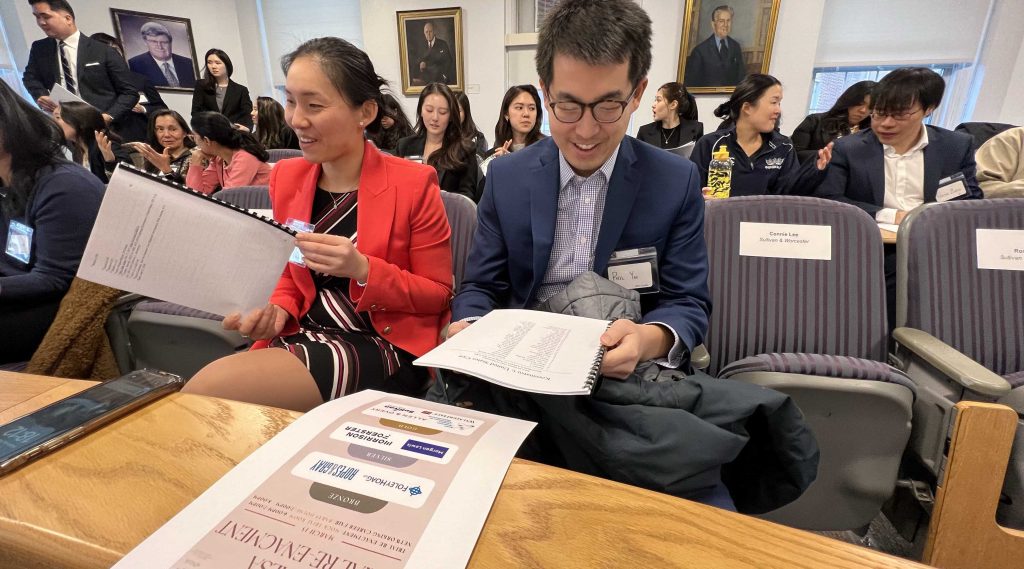Inspired by the importance of a case they were studying in constitutional law born of the treatment of Japanese residents in America during World II, members of BC Law’s Asian Pacific American Law Students Association (APALSA) decided to do something to better educate themselves, and the larger community, about the landmark decision.
They did so by staging an hour-long reenactment on March 15 of the Supreme Court case Korematsu v. United States with a script provided by the Asian America Bar Association of New York. The manuscript traces the journey of Fred Korematsu, a young man corralled by authorities and interned in a detention camp for the duration of the war, and the long walk afterward to righting the injustice that he and fellow Japanese-Americans endured.
The Supreme Court upheld that it was constitutional to exclude Japanese-Americans from the West Coast military area during World War II, using the bombing of Pearl Harbor as an excuse to enable racial discrimination, says 2L Seung Hye Yang, who helped organize the reenactment and wrote about it in BC Law’s Impact blog. In a 6-3 decision, the Supreme Court held that the need to protect against espionage by Japan outweighed the rights of Americans of Japanese ancestry.
In her post, Yang describes the situation this way: Defendant Fred Korematsu lived during a time where racial tensions against Asian-Americans were at an all-time high, and the law failed to protect him and thousands of other Japanese-Americans who were forced into internment camps in the name of “protecting the nation.” The Supreme Court effectively applied the strict scrutiny standard of review to the US government’s racial discrimination, being only one of the few cases where the Court held that the government met the standard.
“This is precisely why we decided to go forward with using the Korematsu script. We wanted to use this reenactment as an opportunity for 1Ls to learn more about the case, while showcasing their public speaking skills to participating attorneys, and also hoped that attorneys would learn something new as well and reflect back on their time in law school and how much has changed since then,” says Yang.
“Although this began as a somber reminder of the wrongdoings of the Supreme Court, it evolved into a story of hope, a story of resilience—Fred Korematsu’s fight for equality in the face of gross injustice,” she concludes.
Read her full Impact blog to learn how APALSA recruited participants and engaged lawyers and law firms to build community and develop networking opportunities around the reenactment.


